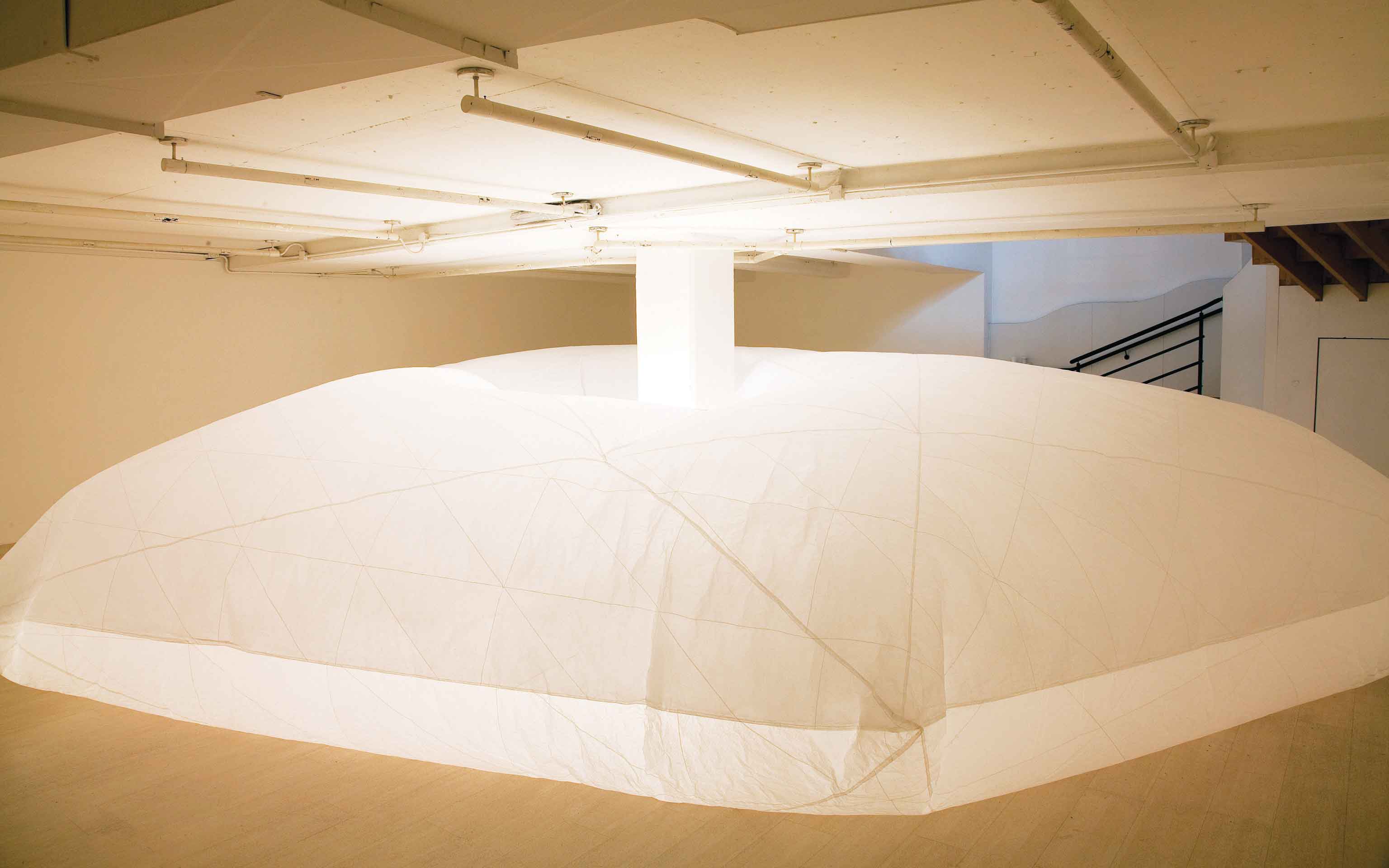« Reviews
David Maggioni: Tranquila

David Maggioni, Tranquila, 2011, mixed media installation, silk paper, variable dimensions. Photo Daniel Kiblisky.
Galería Ruth Benzacar - Buenos Aires
By Marina Reyes-Franco
The best way to look at David Maggioni’s Tranquila installation is while descending the stairs to Ruth Benzacar’s underground gallery. From above and going down, you get the perfect view of what seems like a gigantic glowing white cloud that takes up almost all of the roughly 90 square meters of the gallery. The atmosphere is indeed calm and eerily soothing; there seems to be a living, breathing giant sleeping in the room.
It’s quite impossible to not talk about the context in which this 23-year-old art student from Rosario got an exhibition at Galería Ruth Benzacar. Every year, Benzacar holds a competition for young artists, and the winner gets to have a solo exhibition in the gallery, the most prestigious in Argentina. Dozens of young artists send their portfolios to be considered, not for a cash or acquisition prize, but rather some exposure and the hope of selling and hitting the big time. This year, the only artist that caught my eye was Sebastián Desbasts, but he wasn’t the winner. The prize is kind of a metaphorical young artists’ “draft,” and last year, quite deservingly, Maggioni was the first pick.
For the past couple of years, Maggioni has been working with silk paper to create giant colorful shapes, similar in function to aerostats. Working between painting and sculpture, he often showed and released his work in the fields of the Santa Fe province, or exhibitions where his work would take up all the space, from floor to roof. Such was the case at last year’s “Curriculum Cero,” but this time around Maggioni has definitely changed, and it’s for the best. Early last year, Maggioni moved to Buenos Aires after being accepted into the art program at the Torcuato Di Tella University, a pilot program for a future art department that last year featured Jorge Macchi as mentor. He had a whole year to think about the exact measurements and conditions of the gallery, and he constructed an intricate patchwork of white paper that circumvents the gallery’s central column. From afar, the structure seems more rigid, and it’s only when you get close to it, or walk around it, that you realize just how delicate it really is.
Whereas before the artist was more concerned with color and design, he prefers to focus on space now. Having taken away the colors and avoiding what could easily become a piñata cliché, Maggioni suggests the space within; a shape that contains the air that is there anyway but would be otherwise ignored. The transparent is made evident, and the decision to keep the show so clean suggests a growing maturity in the young artist as well. Before going down the stairs, Maggioni has displayed a book he made, also with silk paper, with different shapes cut out according to the colors of the paper. It reminds me of the things that can be hidden in hollow books. If touched, it would be completely destroyed. This piece seems to have little to do with the other, but I appreciate that, through the book, an artist who doesn’t have a large body of work just yet is suggesting another road he might be taking in the future.
Now, back to the giant creature in the gallery: When asked about the possible biological nature of work, Maggioni downplays the effect caused by the hot air inside the paper structure. I disagree-the glowing light emanating from the center of the artwork and the slow, rhythmic up-and-down movement of the paper can only suggest a living thing. Perhaps it’s hybernating.
(November 23- December 30, 2011)
Marina Reyes Franco is a freelance writer and curator. She is pursuing a Master’s Degree in Argentine and Latin American Art History at the Instituto de Altos Estudios Sociales, Universidad Nacional de San Martín in Buenos Aires.
Filed Under: Reviews


































